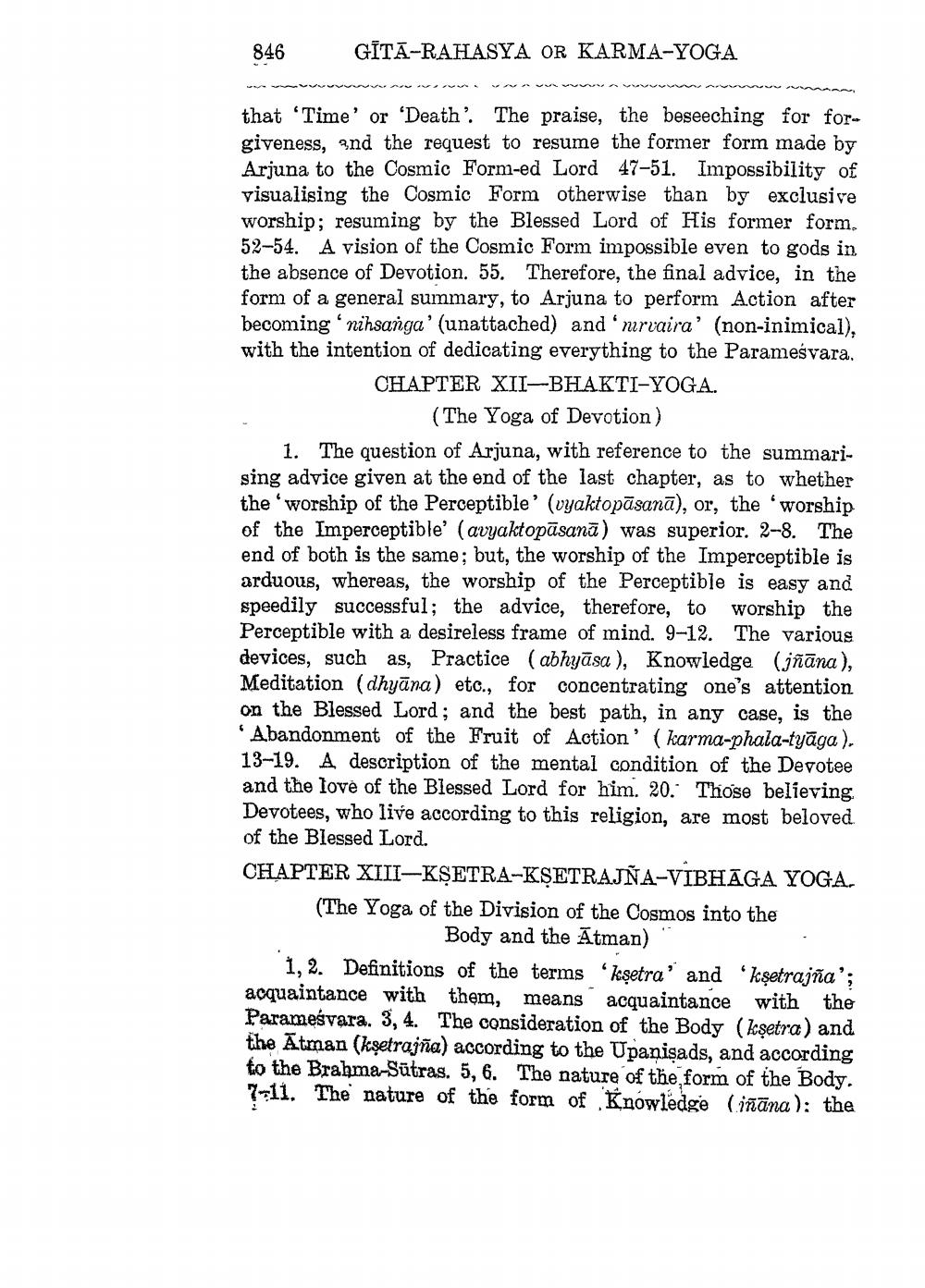________________
846
GĪTĀ-RAHASYA OR KARMA-YOGA
that 'Time' or 'Death'. The praise, the beseeching for forgiveness, and the request to resume the former form made by Arjuna to the Cosmic Form-ed Lord 47-51. Impossibility of visualising the Cosmic Form otherwise than by exclusive worship; resuming by the Blessed Lord of His former form. 52-54. A vision of the Cosmic Form impossible even to gods in the absence of Devotion. 55. Therefore, the final advice, in the form of a general summary, to Arjuna to perform Action after becoming 'nihsanga' (unattached) and 'mrvaira' (non-inimical), with the intention of dedicating everything to the Parameśvara. CHAPTER XII-BHAKTI-YOGA.
(The Yoga of Devotion)
1. The question of Arjuna, with reference to the summarising advice given at the end of the last chapter, as to whether the 'worship of the Perceptible' (vyaktopāsanā), or, the 'worship of the Imperceptible' (avyaktopāsanā) was superior. 2-8. The end of both is the same; but, the worship of the Imperceptible is arduous, whereas, the worship of the Perceptible is easy and speedily successful; the advice, therefore, to worship the Perceptible with a desireless frame of mind. 9-12. The various devices, such as, Practice (abhyasa), Knowledge (jñāna), Meditation (dhyana) etc., for concentrating one's attention on the Blessed Lord; and the best path, in any case, is the 'Abandonment of the Fruit of Action' (karma-phala-tyāga). 13-19. A description of the mental condition of the Devotee and the love of the Blessed Lord for him. 20. Those believing Devotees, who live according to this religion, are most beloved of the Blessed Lord.
CHAPTER XIII-KSETRA-KSETRAJÑA-VIBHAGA YOGA.
(The Yoga of the Division of the Cosmos into the Body and the Atman)
1, 2. Definitions of the terms 'kṣetra' and 'kṣetrajña'; acquaintance with them, means acquaintance with the Paramesvara. 3, 4. The consideration of the Body (kṣetra) and the Atman (ksetrajña) according to the Upanisads, and according to the Brahma-Sutras. 5, 6. The nature of the form of the Body. 7-11. The nature of the form of Knowledge (iñana): the




